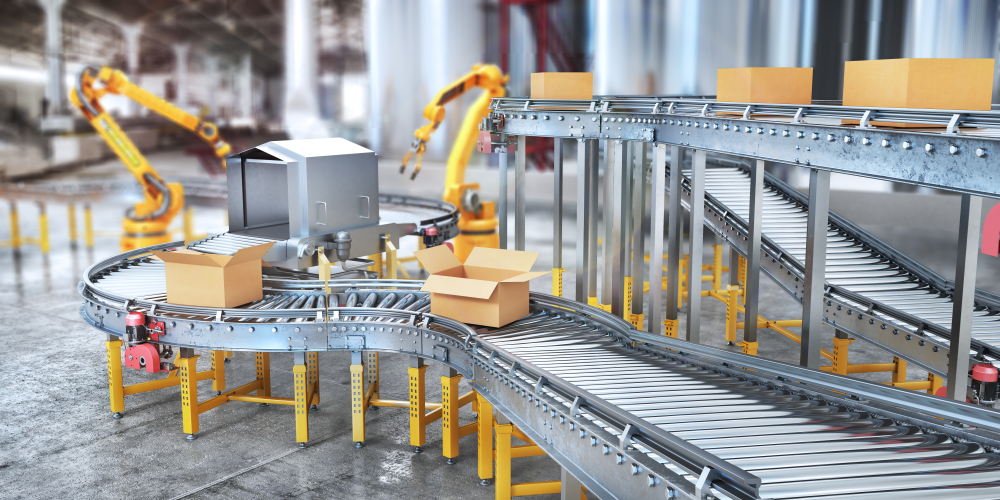Are you intrigued by packing robots but need help figuring out what they are and how to use them? You’re in luck. In this guide, we’ll discuss the different kinds of packaging robots available and their various uses. We’ll also examine why businesses should consider integrating a robotic solution into their operation to help drive efficiency and accuracy with minimal human oversight.
Whether you’re a novice considering introducing your facility to robot automation or an expert looking to improve your workflow processes, this guide has something for everyone. So read on and discover all that robotic systems can do for you.
Definition of Packaging Robots and Their Different Types
As e-commerce grows popular, businesses seek more efficient ways to package and ship products to customers. It is where packaging robots come into play – automated machines designed to increase productivity and streamline packaging processes. Various types of packaging robots include pick-and-place robots, palletizing robots, and case-packing robots.
Each type serves a unique purpose in the packaging process, utilizing advanced technology such as vision systems and software to ensure accuracy and speed. Investing in packaging robots can increase efficiency and improve product quality and customer satisfaction, making it a valuable asset for businesses looking to stay ahead in the competitive market.
Advantages of Packaging Robots for Logistics and Distribution Systems
Packaging robots into your logistics and distribution systems has numerous advantages, including increased productivity, reduced labor costs, improved accuracy, and faster turnaround times. These benefits are especially crucial for businesses dealing with high volumes of products or tight delivery schedules.
One major advantage of packaging robots is their ability to work around the clock without needing breaks or time off. It helps increase overall productivity and reduces the need for human labor, which can be costly and time-consuming.
Additionally, packaging robots are equipped with advanced technology to handle delicate or irregularly shaped products accurately, reducing the risk of damage during packaging. It not only improves product quality but also ensures customer satisfaction.
The Cost of Buying vs Renting a Packaging Robot
When considering integrating packaging robots into your operation, one of the critical decisions is whether to buy or rent. Depending on your business’s budget and needs, both options have advantages.
Buying a packaging robot may require a significant upfront investment but can save costs in the long run, especially for businesses with high product volumes. On the other hand, renting allows companies to access advanced technology without a high initial cost, making it an attractive option for smaller or newer businesses.
The Benefits and Challenges of Integrating a Packaging Robot into Your Business
Integrating a packaging robot into your business can bring numerous benefits, but it’s essential also to consider the potential challenges. Key benefits include increased productivity and efficiency, improved accuracy and quality control, reduced labor costs, and faster turnaround times. Packaging robots can often be integrated seamlessly with existing systems and processes, making implementation smoother.
However, integrating a packaging robot also comes with challenges, such as the initial cost and time investment, training employees to work alongside the robot, and potential technical issues. It’s essential for businesses to carefully consider these factors before making a decision.
How to Choose the Right Packaging Robot for Your Needs
With various types of packaging robots available in the market, choosing the right one for your business’s specific needs is essential. Factors to consider include production volume, product type and size, desired level of automation, integration capabilities with existing systems, and budget.
Working closely with a trusted provider or integrator who can assess your business’s requirements and recommend the best packaging robot solution is also essential. It can help ensure a seamless integration process and maximize the benefits for your business.
Tips on Maintaining Your Packaging Robot for Optimal Performance
Regular maintenance is crucial to ensure your packaging robot continues to run at its best. It includes cleaning and maintaining the robot’s components, updating software as needed, and addressing any issues promptly. Also, properly training employees who work with the robot can help prevent damage or malfunctions.
It’s also essential to have a backup plan in case of unexpected downtime or technical difficulties. It could involve having a spare robot or alternative packaging process in place to minimize interruptions in production.
Conclusion
Packaging robots are becoming increasingly popular in the logistics and distribution industry thanks to their ability to improve efficiency and accuracy while reducing labour costs. With various types of packaging robots available and the option to buy or rent, businesses have plenty of choices when integrating this technology into their operations. However, it’s essential to carefully consider your business’s specific needs and challenges before making a decision.


